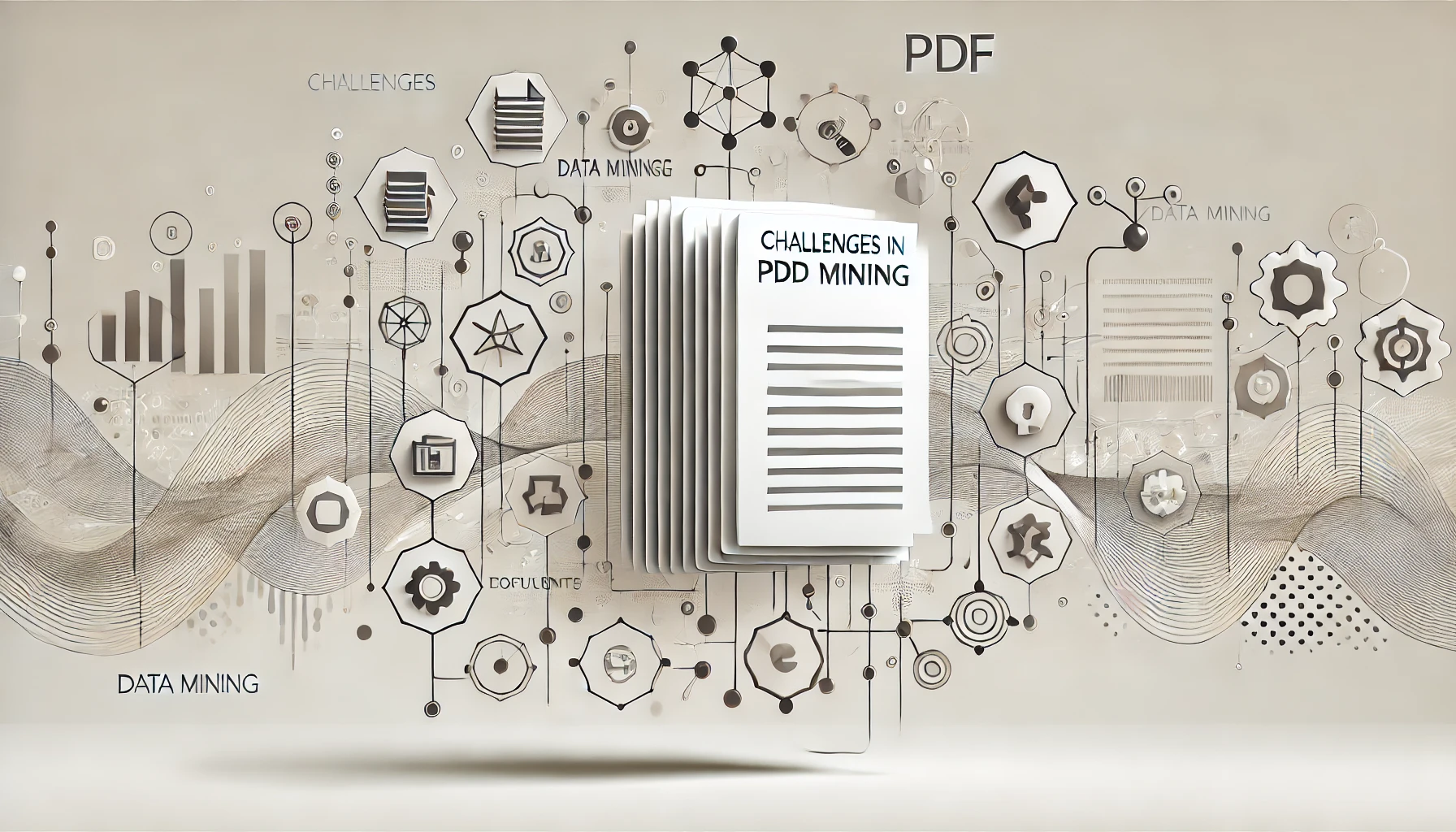You’ve likely encountered the challenges of extracting data from PDFs, but have you explored the top 10 revolutionary PDF Data Extraction techniques that are transforming this process? From text and images to tables and metadata, these cutting-edge methods promise to revolutionize how you interact with PDF documents. Stay tuned to uncover how these advanced extraction techniques can streamline your data processing and open new possibilities for information retrieval.
Text-Based Extraction
When extracting data from PDF files, one of the primary techniques employed is text-based extraction. This method involves parsing the text content within the PDF file to extract relevant information. Text classification plays a crucial role in this process, where algorithms are used to categorize and organize the extracted text based on predefined categories or labels.
Font recognition is another key aspect of text-based extraction. By identifying different fonts used in the PDF document, it becomes easier to distinguish between headings, paragraphs, and other text elements. This recognition allows for more accurate extraction of specific text components, leading to enhanced data retrieval capabilities.
Through text-based extraction, you can efficiently extract and analyze textual data from PDF files, enabling you to derive valuable insights and information. By leveraging text classification and font recognition techniques, you can streamline the extraction process and improve the accuracy of the extracted data. This method forms the foundation for effective PDF data extraction, paving the way for further analysis and utilization of extracted information.
Image-Based Extraction
To effectively extract data from PDF files that contain images, the technique of Image-Based Extraction is utilized. Image processing plays a crucial role in this method, where algorithms are employed to analyze and interpret the visual content within the PDF documents. By leveraging image processing techniques, data can be extracted from images embedded in PDF files, allowing for the retrieval of valuable information that may not be present in text form.
Data visualization is another key aspect of Image-Based Extraction. Through the extraction of data from images within PDF files, this technique enables the representation of information in a visual format that enhances understanding and analysis. By converting image-based data into visual representations such as graphs, charts, or diagrams, complex information can be presented in a more intuitive and accessible manner.
Extraction of Tabular Data
When it comes to extracting tabular data from PDFs, the key aspects revolve around table structure recognition and data parsing algorithms. Table structure recognition involves identifying the layout of tables within PDF documents, while data parsing algorithms are used to extract and organize the data within these tables. By combining these techniques, efficient extraction of tabular data can be achieved, enabling streamlined analysis and utilization of the information contained in PDF files.
Table Structure Recognition
Recognizing table structures within PDF documents is a critical aspect of extracting tabular data efficiently. Data visualization techniques are often employed to identify patterns and boundaries that signify tables. These methods utilize graphical representations to aid in the detection of rows, columns, and headers within the document. Through the analysis of visual cues such as lines, shading, and text alignment, the software can accurately interpret the tabular structure.
Error handling is crucial during the table structure recognition process. Since PDF documents can vary significantly in formatting and layout, the extraction tool must be equipped to handle inconsistencies and anomalies. Robust error detection mechanisms are implemented to address issues like merged cells, missing data, or irregular table layouts. By effectively managing errors, the extraction tool can ensure the accurate retrieval of tabular data from diverse PDF files.
Data Parsing Algorithms
One crucial aspect of efficient PDF data extraction lies in the implementation of sophisticated data parsing algorithms. Data parsing algorithms are crucial for extracting tabular data accurately from PDF documents. These algorithms utilize data normalization techniques to ensure consistency in the extracted data format. Additionally, data validation methods are employed to verify the accuracy and integrity of the extracted information.
To enhance the extracted data further, data enrichment strategies can be applied. These strategies involve supplementing the extracted data with additional information from external sources to provide more context and value. Moreover, data transformation approaches can be utilized to restructure the extracted data into a more usable format for analysis or integration into other systems.
Extraction of Metadata
Extracting metadata from PDF files is a crucial process in data extraction techniques. Metadata analysis involves extracting information such as author details, creation date, modification date, and keywords embedded within the PDF. This data categorization allows for efficient organization and retrieval of documents based on specific criteria.
When extracting metadata, tools can be used to automate the process, saving time and ensuring accuracy. By analyzing metadata, one can gain insights into the document’s history, origin, and content without having to read the entire file manually. This is particularly useful in scenarios where large volumes of PDF files need to be processed quickly.
Furthermore, metadata extraction plays a vital role in data management, compliance, and information governance. It enables users to track document versions, ensure data integrity, and enhance search capabilities within a document repository. Overall, mastering metadata extraction is essential for effective information retrieval and management in PDF data extraction processes.
Extraction From Encrypted PDFS
When dealing with PDF files, the extraction of data from encrypted documents presents a unique challenge. Decryption challenges arise when attempting to access content within protected PDFs. To extract data from encrypted PDFs, specialized tools or software that can bypass security measures are often required. These tools must be capable of decrypting the file to access its contents successfully.
Security implications must be carefully considered when extracting data from encrypted PDFs. Unauthorized decryption of protected documents can lead to legal consequences and breaches of confidentiality. It is crucial to ensure that data extraction from encrypted PDFs complies with relevant laws and regulations to prevent potential security risks. Additionally, the confidentiality of the extracted data must be maintained to protect sensitive information from unauthorized access.
Multilingual Data Extraction
When dealing with multilingual data extraction from PDF files, the ability to accurately retrieve information in various languages is crucial for effective analysis and processing. Language detection plays a vital role in identifying the languages present within the PDF document. Advanced algorithms can automatically detect the language of the text, enabling precise extraction. Translation accuracy is essential when converting multilingual content into a single language for comprehensive analysis. Tools that ensure high translation accuracy are indispensable for maintaining the integrity of the extracted data.
Multilingual keyword extraction involves identifying and extracting keywords in different languages present in the PDF. This process requires sophisticated algorithms that can recognize keywords in various linguistic contexts. Language-specific formatting is also crucial during data extraction. Maintaining the original formatting specific to each language ensures accurate representation of the extracted information.
To achieve effective multilingual data extraction, utilizing tools equipped with robust language detection capabilities, ensuring high translation accuracy, implementing advanced multilingual keyword extraction techniques, and preserving language-specific formatting are key considerations. These elements collectively contribute to the successful extraction of multilingual data from PDF files.
Extraction of Embedded Objects
Moving from the intricacies of multilingual data extraction, the focus now shifts towards the extraction of embedded objects from PDF files. When dealing with PDFs, embedded objects such as images, videos, and other multimedia elements can be crucial for comprehensive data analysis. Here are three key techniques for extracting embedded objects efficiently:
- Object Detection: Utilizing advanced algorithms for object detection, PDF data extraction tools can automatically identify and extract embedded objects from PDF files. This process helps in accurately locating and segregating different types of embedded content.
- Embedded Content Extraction: Through specialized extraction methods, tools can isolate embedded content like images, charts, and annotations from PDF documents. This targeted extraction enables users to access specific embedded objects for further analysis or processing.
- Metadata Extraction: Extracting metadata associated with embedded objects provides valuable insights into the origin, format, and properties of the embedded content. This metadata extraction enhances the understanding of the embedded objects and aids in organizing the extracted data effectively.
Optical Character Recognition
For efficient PDF data extraction, the process of Optical Character Recognition (OCR) plays a vital role in deciphering text content from scanned PDF files. OCR is a technology that converts different types of documents, such as scanned paper documents, PDF files, or images captured by a digital camera, into editable and searchable data. By implementing OCR techniques, you can optimize the efficiency of extracting text from PDFs while enhancing the accuracy of the extracted content.
Efficiency optimization in OCR involves the use of advanced algorithms that can quickly analyze and recognize characters within the scanned PDF files. This optimization ensures a faster extraction process, enabling you to retrieve text data promptly and efficiently. Moreover, accuracy enhancement is achieved through continuous improvements in OCR technology, leading to more precise text recognition and reduced errors in the extracted content.
Extraction of Mathematical Formulas
Following the optimization of OCR techniques for text extraction, another crucial aspect in PDF data extraction is the extraction of mathematical formulas. This process involves intricate steps to accurately identify and extract equations and symbols embedded within PDF documents.
Mathematical Formulas Extraction Techniques:
- Equation Recognition: Advanced algorithms are utilized to identify mathematical equations within PDF files. These algorithms analyze the structure, symbols, and arrangement of characters to accurately recognize and extract equations.
- Symbol Extraction: Symbol extraction involves isolating individual mathematical symbols within formulas. This technique focuses on identifying and extracting symbols like Greek letters, mathematical operators, and other special characters used in mathematical expressions.
- Mathematical Structure Analysis: By analyzing the mathematical structure of formulas, extraction techniques can accurately interpret and extract complex mathematical expressions. This process involves understanding the relationships between symbols, operators, and variables to ensure the correct extraction of mathematical content.
Extraction of Graphical Data
When extracting graphical data from PDF documents, the process involves intricate analysis and recognition techniques to accurately identify and extract visual elements such as charts, graphs, diagrams, and images. Graphical representation analysis plays a crucial role in deciphering the visual content within PDFs. Data visualization techniques help in interpreting and organizing the extracted graphical data for further analysis. Image processing algorithms are utilized to enhance the quality of images extracted from PDFs, ensuring a clearer representation of graphical content. The interpretation of graphical data involves understanding the context in which charts and graphs are presented within the document. By employing advanced algorithms and techniques, the extraction of graphical data can be streamlined and made more efficient. Overall, a systematic approach to graphical data extraction, involving precise analysis and interpretation methods, is essential for accurately retrieving visual information from PDF documents.
Frequently Asked Questions
Can PDF Data Extraction Techniques Be Applied to Handwritten Text?
Yes, PDF data extraction techniques can be applied to handwritten text. Handwritten text recognition using OCR technology has significantly improved accuracy, enabling efficient extraction of data from handwritten documents. This advancement has transformed data processing capabilities.
How Does Data Extraction Handle Scanned PDFS With Poor Quality Images?
When handling scanned PDFs with poor image quality, image enhancement techniques like machine learning and image processing can improve OCR accuracy, aiding in data extraction. These methods refine images for better text recognition and extraction precision.
Is It Possible to Extract Data From PDFS With Complex Layouts?
When extracting data from PDFs with complex layouts, AI algorithms for text recognition and image processing through layout analysis play a crucial role. These techniques enable efficient extraction of information, even from intricate document structures.
Can Data Extraction Techniques Handle PDFS With Multiple Languages in One Document?
Yes, data extraction techniques can handle PDFs with multiple languages in one document. Language recognition and OCR accuracy enable multilingual data extraction and text translation, ensuring accurate extraction of data from diverse language sources.
How Does Extraction Work With PDFS Containing Interactive Elements Like Forms?
You think extracting data from interactive PDFs is a breeze? Think again. Optical character recognition struggles with forms. Data extraction wades through forms integration. It’s a dance of precision and patience.



